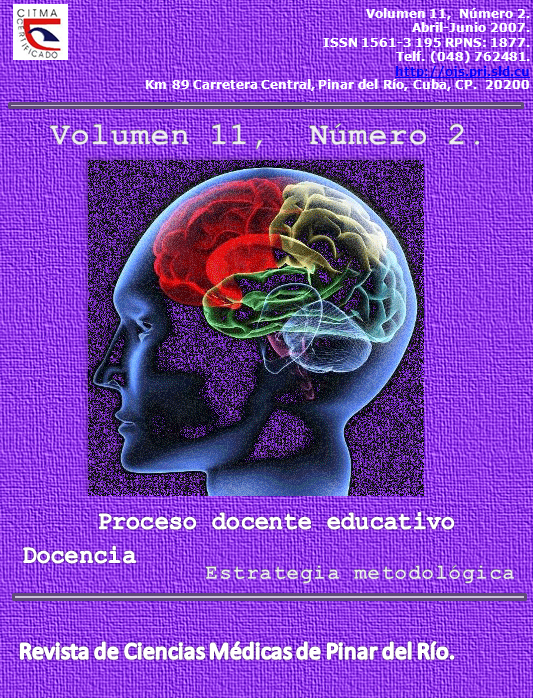Metodología para la realización de la teleconferencia. Methodology for the performance of a Telelecture
Abstract
Se elaboró una metodología para impartir las tele conferencias con el objetivo de unificar criterios partiendo de la revisión de la bibliografía y de la experiencia práctica de los profesores del Policlínico Universitario "Turcios Lima". Se plantea un orden metodológico que sirve de guía para impartir esta actividad, definiendo tres etapas que son la fase preparatoria, el desarrollo y las conclusiones o reflexiones, destacando a su vez que la etapa de desarrollo se subdivide en introducción, desarrollo propiamente dicho y conclusiones. Se hace mención a las principales ventajas de esta actividad.
Palabras claves: Enseñanza/Métodos, Educación Médica, Centros de salud, Universidades, Cuba, Medios Audiovisuales, Médicos de Familia, Telecomunicaciones.
ABSTRACT
A methodology to teach a telelecture was prepared, aimed at reaching into agreements from the literature revision and practical experience of professors at "Turcios Lima" University Outpatient Clinic. The methodological order that is to be used as a guide to teach this activity is described in three stages: preparatory, development, conclusions or reflections, highlighting at the same time the stage of development that is subdivided in introduction, development and conclusions. The main advantages of this activity are mentioned.
Key words: Teaching/Methods, Medical Education, Health Institutions, Universities, Cuba, Audiovisual Aids, Family Doctors, Telecommunications.
Downloads
How to Cite
Issue
Section
License
Authors who have publications with this journal agree to the following terms: Authors will retain their copyrights and grant the journal the right of first publication of their work, which will be publication of their work, which will be simultaneously subject to the Creative Commons Attribution License (CC-BY-NC 4.0) that allows third parties to share the work as long as its author and first publication in this journal are indicated.
Authors may adopt other non-exclusive license agreements for distribution of the published version of the work (e.g.: deposit it in an institutional telematic archive or publish it in a volume). Likewise, and according to the recommendations of the Medical Sciences Editorial (ECIMED), authors must declare in each article their contribution according to the CRediT taxonomy (contributor roles). This taxonomy includes 14 roles, which can be used to represent the tasks typically performed by contributors in scientific academic production. It should be consulted in monograph) whenever initial publication in this journal is indicated. Authors are allowed and encouraged to disseminate their work through the Internet (e.g., in institutional telematic archives or on their web page) before and during the submission process, which may produce interesting exchanges and increase citations of the published work. (See The effect of open access). https://casrai.org/credit/



